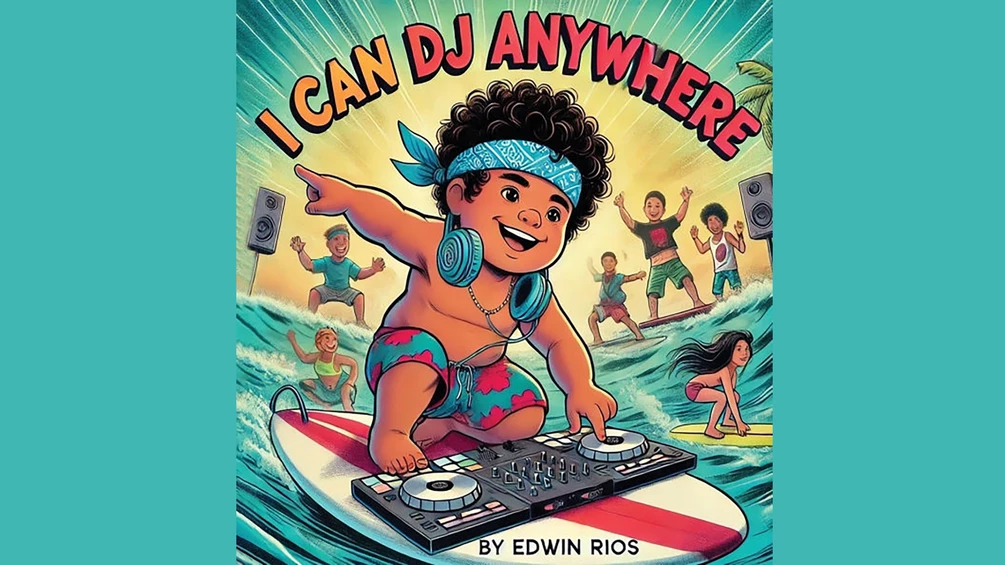When you think about DJing, images of packed dance floors, flashing lights, and late-night sets come to mind. But what if DJing wasn’t just about the party scene? What if it was actually an incredible educational tool for kids, one that boosts creativity, sharpens problem-solving skills, and builds confidence?
That’s exactly the kind of thinking behind I Can DJ Anywhere, a new illustrated children’s book by DJ Bear Who? (Edwin Rios). More than just a fun story, the book introduces young readers to the universal power of music, showing that DJing is more than just beats and bass, it’s an art form that can shape young minds in unexpected ways.
Music as a Brain Booster
Science has long proven that learning music enhances brain function. Kids who study music show improved memory, better problem-solving abilities, and even stronger math skills. DJing takes this a step further. Unlike traditional instrument training, DJing demands real-time decision-making. It teaches children to recognize patterns, match rhythms, and layer sounds in a way that strengthens their cognitive flexibility.
Think about beat-matching, it’s not just a DJ trick. It requires acute auditory processing and mathematical timing. A child learning to mix tracks is unknowingly developing skills that can translate to better focus in the classroom and stronger spatial reasoning.
Emotional Intelligence Through Sound
One of the most underrated aspects of DJing is its emotional depth. A great DJ doesn’t just play music, they tell a story, creating a journey of moods and energy shifts.
For kids, this is huge. Music is a natural way for them to process emotions. Whether it’s excitement, frustration, or sadness, mixing music allows children to express feelings they might not yet have the words for. Learning how to control sound also teaches emotional regulation. Picking the right song for the right moment isn’t just a DJ skill—it’s a life skill.
Confidence and Self-Expression
Public speaking is terrifying for many adults, let alone kids. But standing behind decks, selecting tracks, and performing in front of an audience (even if it’s just family and friends) builds confidence like nothing else.
DJing encourages kids to take creative risks. There’s no single “right” way to mix music, which means experimentation is encouraged. Every child who picks up a DJ controller is learning to trust their instincts, make bold choices, and embrace their individuality.
Beyond the Party: A New Kind of Music Education
DJing isn’t about late nights in clubs—it’s about storytelling, problem-solving, and artistic exploration. Books like I Can DJ Anywhere are helping reshape the narrative, showing kids (and parents) that turntables and controllers can be just as enriching as a piano or a violin.
We need to start treating DJing and electronic music production with the same respect as traditional music education. More schools, libraries, and after-school programs should be introducing children to these tools, allowing them to engage with music in a hands-on, contemporary way.
By shifting the conversation away from “party culture” and toward creativity and learning, books like I Can DJ Anywhere are paving the way for a new generation of young artists. It’s time to recognize that DJing is more than just entertainment, iit’s an educational powerhouse waiting to be unlocked.







